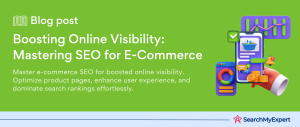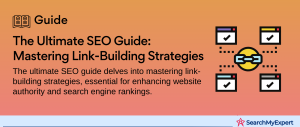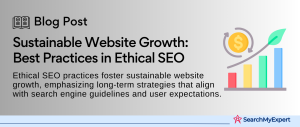Unlocking the Power of Keyword Research in Digital Marketing
Keyword research is the cornerstone of digital marketing, a process fundamental to understanding and reaching your target audience effectively. In the dynamic world of online marketing, the ability to identify and utilize the right keywords can make the difference between a successful campaign and one that fails to resonate with its intended audience.
What is Keyword Research?
At its core, keyword research involves identifying the terms and phrases that people use when searching for information online. These keywords are crucial for optimizing various aspects of digital marketing, from search engine optimization (SEO) to pay-per-click (PPC) advertising, content creation, and beyond.
Why is Keyword Research Vital?
Improved Search Engine Rankings: By understanding what your target audience is searching for, you can tailor your website and content to rank higher in search engine results pages (SERPs).
- Targeted Traffic Generation: Effective keyword research ensures that the traffic coming to your site is highly targeted, increasing the chances of engagement and conversion.
- Content Relevance:
Knowing the right keywords helps in creating content that is relevant and valuable to your audience. - Market Insights:
It provides insights into market trends, customer behavior, and the competitive landscape. - Cost-Effectiveness: In PPC campaigns, using well-researched keywords can lead to lower costs per click and higher ROI.
- Brand Visibility and Authority: Consistently appearing for relevant searches helps build brand authority and visibility online.
With the importance of keyword research established, the next steps involve delving deeper into understanding user intent, discovering relevant keywords, and integrating them strategically into your digital marketing efforts.
Understanding User Intent
User intent refers to the purpose, goal or motivation behind a search query. When people turn to a search engine, they have clear intentions driving what they type into that search box. These intents can include:
- Navigational –
To directly reach a certain website or branded business they already have in mind - Informational –
Researching a broader topic to learn more information about it before making a decision - Transactional –
To make an immediate purchase of a product or service - Commercial – Seeking contact details, pricing or other details with more direct business ready to buy
There may also be blends of these intents, but categorizing general underlying needs behind queries is a fundamental concept underpinning keyword research. It allows matching website content more precisely to user goals to provide the right information at the appropriate stage of their exploration or decision journey.
Understanding the intent behind keyword searches in granular detail unlock significant benefits:
- Creating Content Optimized For Intent – With insights into user goals seeking certain keywords, sites can shape information to match with appropriate depth, focus and format. This reduces bounce rates from mismatching needs.
- Prioritizing Keywords – Search volume alone doesn’t determine the value of a keyword. Volume estimates should be balanced with actual intent and potential to indicate readiness to buy. This avoids wasted budgets on high volume keywords that will never covert on site.
- Informed Topic Targeting –
Grouping keywords by common themes of user intent provides direction on untapped content opportunities that can serve needs in that space in a differentiated way while supporting a business’ offerings. - Volume Estimates By Intent –
Intent metrics on tools like Google Ads provides more tangible data on true volume of commercial intent rather than vanity searches unlikely to convert. This improves budget and bid decisions to favor product and commercially-oriented terms.
But how is user intent actually determined to empower these benefits? There are two core approaches:
Leveraging Search Engine Data
Google and Bing have advanced their algorithms and tools to infer user intent based on historical click, browse and conversion data. Google’s tools provide intent categories to group keywords as well as metrics like avg. CPC and conversion rate for transactional, informational and even device type. 3rd party keyword tools source search engine data to provide intent insights for research.
Direct Testing & Assessment
Marketing analysts can manually assess the type of results and content returned for keyword searches and the nature of user behavior such as refinements and clicks from there to categorize general intent themes. Tools like Google’s Autocomplete API help surface the full breadth of longer-tail permutations of root keywords and secondary searches provide signals of needs coming into a topic. Assessing results page types, ads and organic results provides further context of commercial readiness.
Getting clarity on user intent gives advantages Google itself has embedded into its market-dominant algorithm. It allows businesses to align website content, blog posts and campaigns directly with the moments when audiences have demonstrated active need or commercial consideration around topics connected to their offerings. This powers relevance in organic rankings, earned media and paid advertising. In the next step we’ll uncover specific methods and strategies for discovering the hundreds or even thousands of relevant keywords that comprise a fully fleshed out intent-based research framework.
keyword analysis and evaluation
Once a business has uncovered a wide span of relevant keyword opportunities through strategic discovery and research, the next crucial phase is comprehensively analyzing and evaluating metrics for each term to quantify its tangible value and ROI potential.
Carefully assessing the hard data helps setting accurate priorities to elevate keywords truly aligned with content capabilities and success metrics from noise and distraction. Tactically evaluating keywords involves examining:
- Search volume
- Competitiveness
- Commercial intent
- Optimization viability
- Conversion potential
Let’s explore best practices for assessing each facet:
Measuring Search Volume
Baseline monthly or annual search volumes provide estimates on scale of interest and commercial upside. Google’s Keyword Planner is the gold standard, with SEMrush, Moz and keyword research tools also supplying volume data. Trendlines matter more than absolute figures for growth indicators by keyword.
Auditing Keyword Competitiveness
Examining keyword difficulty scores and ranking pages for current terms determines market viability for earning placements. SEMrush and Moz tools generate difficulty scores while Google Search Console lists current page rankings to inform gaps. This grounds larger ranking potential.
Quantifying Commercial Intent
Not all search volume offers equal value. Metrics around commercial intent help prioritize product and conversion-friendly terms. Google campaign data shows granular metrics on purchase orientation by keyword.
Evaluating Website Optimization Viability
Technical SEO factors like site indexes, page authority and ontology significantly dictate possible rankings. Overlaying site strengths with target keywords provides optimization lift potential for content.
Calculating Conversion Potential
Historic analytics data highlighting correlations between past keywords and goal performance indicates tangible conversion value per word. Lexicon resonating with customers converts consistently higher.
Blending together these datadriven evaluations synthesizes an accurate model for stratifying keyword opportunities tailored to unique business conditions with metrics estimating:
- Total possible value contribution
- Quick win upside potential
- Highest volume gap keywords by commercial intent
- Top sales-driving lexicons
- Fast rising keyword demand trends
- Optimization & link building feasibility
Continuous re-evaluation allows adapting to capture shifts in opportunity potential in synch with Google’s constant search algorithm flux. Next we cover best practices for seamlessly blending evaluated, high-potential keywords into website content to attract visitors.
Integrating Keywords Into Content
With clearly identified and thoroughly evaluated target keywords in hand optimized to user intent, search volume, competitiveness and revenue potential, the next pivotal step is seamlessly blending this high value lexicon into the website to attract qualified visitors.
Careful keyword integration entails flowing selected terms into key elements where search algorithms place enhanced priority and visibility including:
- Page titles
- Headers and subheaders
- Opening sentences and paragraphs
- Image file names and alt text
- Link and button anchor text
- URL slugs
- Meta descriptions
Mastering natural, contextual incorporation of keywords into these areas lends relevancy signals to search bots while still putting user experience first. Let’s detail best practices for optimizing placement across key content components:
Crafting Keyword-Rich Titles
Page titles appear prominently on search engine results pages (SERPs) as the main headline link, so aligning to priority keywords and questions refined from research captures attention. Leading titles with primary keywords while incorporating secondary terminology in a compelling, benefit-oriented headline keeps visitors engaged once landed.
Weaving Into Headers
Header tags like H1 and H2 pass extra ranking signals so they warrant inclusion of one or two strong keywords per page. This remains relatively easy since headers summarize topics covered in content sections.
Integrating In Opening Sentences
Prime real estate for keywords is opening paragraphs setting page context, as users tend to scan first sentences linking them to content before reading further. Aim for at least one primary keyword in an opening statement, while remaining natural.
Enhancing Image Elements
Images should always further illustrate page concepts, but the underlying HTML also offers optimization area with alt text descriptions and file name fields for related term mentions invisible to visitors.
Incorporating In Link Text
Anchor text links to other on-site content present another rankings opportunity through using keywords in the linked caption text. This increases pages touching associated topics and boosts internal link velocity.
Updating URL Slugs
URL structure itself conveys topical signals, making pages with product or category keywords directly in slugs more easily connected contextually to searches.
Optimizing Meta Descriptions
Meta descriptions summarize page content in search snippets. Despite not directly influencing rank, compelling descriptions with keywords click-through rates dramatically.
Getting keywords referenced thoroughly but naturally across web content assets boosts discovery and engines perceiving page relevance for those terms. But simple repetition fails to build authentic authority. The art is seamlessly conveying keywords within genuinely useful, engaging content aligned to searcher needs.
This content should provide answers, solutions, insights and resources focused on what the keyword implies. Creating this content central to visitor intents converts visitors as subscribers and customers. The most effective integration then comes through optimizing high-quality, in-depth content siloed around specific keywords then interlinking internally. This expanding, clustered content amplifies page authority around valuable keywords in a meaningful way to visitors.
Monitoring content over time for emerging keyword gaps and shifting priorities ensures sites stay centered around terms driving real user attention. Updating and expanding content around new keywords keeps pace with audience interests. As Google’s algorithm weighs pages on direct response to user needs, regular content refresh focused on valorized keywords keeps visibility optimized in volatile search rankings. Let’s now discuss tracking success once keyword content launches.
Monitoring and Adapting Keyword Strategy
With keyword research completed, targets identified and evaluated, and integration with website content in motion comes the equally essential practices of actively tracking performance and continually optimizing strategy.
Effective keyword monitoring provides the actionable, empirical data determining what search terms and associated content to:
- Invest in expanding based on high performance potential
- Refine through increased prominence due to rising ROI
- Retire or deprioritize based on losses in visitor value
- Reactively build content around from emerging popularity
Monitoring keywords requires consistent reporting on tangible metrics highlighting tangible impact on goals including:
Traffic Volume Changes
Comparison reports tracking changes in organic visits and landing sessions by keyword paints evolution of interest and content resonance over set intervals. Rising stars indicate opportunities for more aggressive optimization and earned media focus.
Keyword Rank Movement
Monitoring rankings mobility for target terms in regular cycles spotlights successes from improved authority or potential needs for link building and visibility promotion efforts. New first page rankings mark clear achievement.
Search Visibility Positions
While Page 1 rankings remain the benchmark, also tracking supplementary keyword visibility like featured snippets, knowledge panels or image pack carousels reveals secondary search exposure driving awareness and traffic.
Engagement Metrics
Monitoring attention metrics like click-through rates and average session duration for keyword landing pages determines the level of relevance and satisfaction delivered to attracted searchers’ needs. Higher signals better content resonance deserving more curation.
Conversion Performance
Sales, registrations, email subscribers, or other valued actions linked back to corresponding keyword entry pages are the strongest validation of excellence delivering intent. Conversions ultimately determine financial ROI.
Link Earning By Keyword
Tracking keyword referral data and links gained with anchor text mentions or contextual topical alignment reflects growing third-party endorsement, fueling more relevance.
Analyzing this data at both macro level across entire site and for category content clusters exposes strengths to double down on and performance gaps needing adaptation like:
- Adding supporting pages around rising popularity keywords
- Optimizing underperforming but high potential keywords more aggressively through targeted promotion and links
- Updating existing pages with better content, media and calls to action around revenue-driving terms
- Pursuing earned backlinks contextualized around keywords showing visitor quality
- Fixing technical issues causing drops in rankings positions or losing tracking data
The insights then feed directly into strategy and investment priority changes across organic and paid channels, including:
- Content Production – Optimizing material around income and engagement based on keyword analytics highlights best use of limited editorial resources
Paid Media Budgeting –
Keyword conversion data reveals best performing and emerging cost efficient search terms for PPC and shopping campaigns
Site Architecture – Demonstrated keyword interest guides information architecture and site navigation to facilitate discovery
Algorithm Reactions –
Spikes both up and down in visibility mandates reactions to stay in tune with Google’s flux
Continuously monitored keyword data powers evolution from initial research projections to actual observed site search performance to direct ongoing optimizations for sustainable success. As Google updates relevance assessments and user behavior shifts, keeping hands on the pulse of keyword effectiveness is imperative to stay ahead of changes instead of fading into obscurity.
Conclusion
After extensive exploration of core concepts, tactical processes, and optimization best practices across the key phases of discover, research, evaluate, implement and monitor keywords, we arrive at the finale destination – bringing it all together to highlight why this cycle remains an essential foundation of enduring digital marketing success.
We have covered how aligning website content, messaging and experience to the exact words and questions typed into search bars drives higher qualified traffic as the entry pages this traffic lands on earn trust as resources precisely answering needs sought. Keyword optimization lifts discovery by intercepting information-finding moments for decisions happening multiple times each day in Google’s search results pages, earning that coveted positioning ahead of alternatives.
But keywords offer far more beyond a traffic volume play. They inform an entire customer journey strategy. The language, terminology, questions and modifiers comprising keywords contain volumes of contextual insights on audience mindset – detailing where they currently stand in a decision-making or problem-solving processes. Keyword optimization when done effectively amounts to a massive empathy engine – allowing organizations to see what users see as they educate themselves on topics connected to products, services and brands.
Tapping into the habitual research behavior coming through search queries guides creation of the most relevant, helpful information mapped to each phase of exploration. Keyword-focused content guides visitors from introduction to consideration all the way through selection and purchase support. Poor keyword strategies lead visitors to dead ends before they find what they need across the entirety of their online research trails. Strategic keyword optimization keeps engagement high from start to finish.
The metrics emerging from keyword performance crack open a window showing demand trends around industry terminology, rising issues and changes in how prospects frame what they seek. Ongoing tracking as such powers agile reactions to emerging shifts in language, challenges and market forces – futureproofing against declining interest in stale topics.
From crystal clarity on total market volume around niches to the exact queries indicative of those ready for sales conversations, keyword intelligence supports better forecasting, product decisions, territory expansion and countless more data-dependent strategic choices. They fuel models predicting lead volumes and the impact of content launches based on measured correlations between search terms and conversions.
Partner with the best in the business – elite SEO Agencies.
Table of Contents
Toggle






